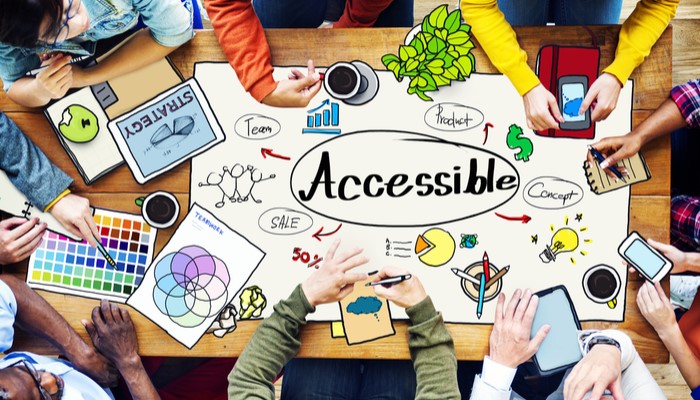
I was having drinks with a colleague the other night and she said something that changed the way in which I see service design in the field of digital accessibility.
"We make sure that people can get from A to B, and that's important."
Yes it is. So, why is it that we only introduce people with disabilities into service design during the late usability stage of research?
People with disabilities are customers and should be part of the 'defining the problem' discovery process and other research activities such as customer journey mapping and pluralistic walkthroughs.
We may have to adapt the way in which we conduct our research practices for example, for a pluralistic walkthrough where a group of users, developers and UX professionals step through a task scenario, we could verbally describe the elements within the paper prototype design to someone who is legally blind. Or move the paper pages on the participant's verbal cue for someone who has limited hand motor control. Nevertheless the participation of people of all abilities is essential.
This philosophy resonated with me during a user testing session when a participant with low vision said to me: "It's one of those things I'm a visual person who has low vision"
Meaning that although text in an infographic might pixelate when zoomed; the format in which it's presented is more digestible to her than a data table which is a standard accessible alternative go-to for graphs, charts and diagrams.
Speaking of data tables, imagine using a screen reader to decipher what five table headers associated to one piece of data is communicating to you, or making sense of this visual information overload if you had autism or dyslexia?
What if you had low vision and you were viewing even a simple data table zoomed at 200 per cent with no gridlines? Would you be able to follow the rows from left to right? Or would you get lost between the rows?
How about trying to select a help tip in a form on a touchscreen device using a head or mouth stylus, or if you had tremors? I hope the hotspot is large enough so that I can hit the target.
Even more problematic are kiosk or POS touchscreens that don't support a capacitive stylus.
It sounds like common sense now however we don't know what we don't know. Why wait until the designs are complete and rendered in code to explore people with disabilities day to day online or digital retail experiences? Especially given that costs are estimated to increase up to 30 times more when incorporating accessibility during the late stages of the development process . At this point it's not cost effective to make changes to the design.
Let's consider online customer conversion rates, the 2016 Click-Away Pound survey conducted in the UK found that 71 per cent of the 6.1 million internet users with access needs clicked away from an e-commerce website that they found difficult to use. This means that they are likely to spend their £11.75 billion on more accessible competitors' sites. Also 82 per cent of customers with access needs would spend more if websites were more accessible.
The ideal situation is to go out in the field, meet the customer and understand things from their point of view at the early discovery stage of research. This allows us to not only consider the application of WCAG 2.0 and the up and coming 2.1 and 3.0 standards in the development of digital technologies, but we can also integrate visual design techniques, coding and technology enhancements such as vector graphics and capacitive touchscreens which inevitably will help the customer get from A to B.
Leona Zumbo is a Principal Digital Inclusion Consultant for Vision Australia.










